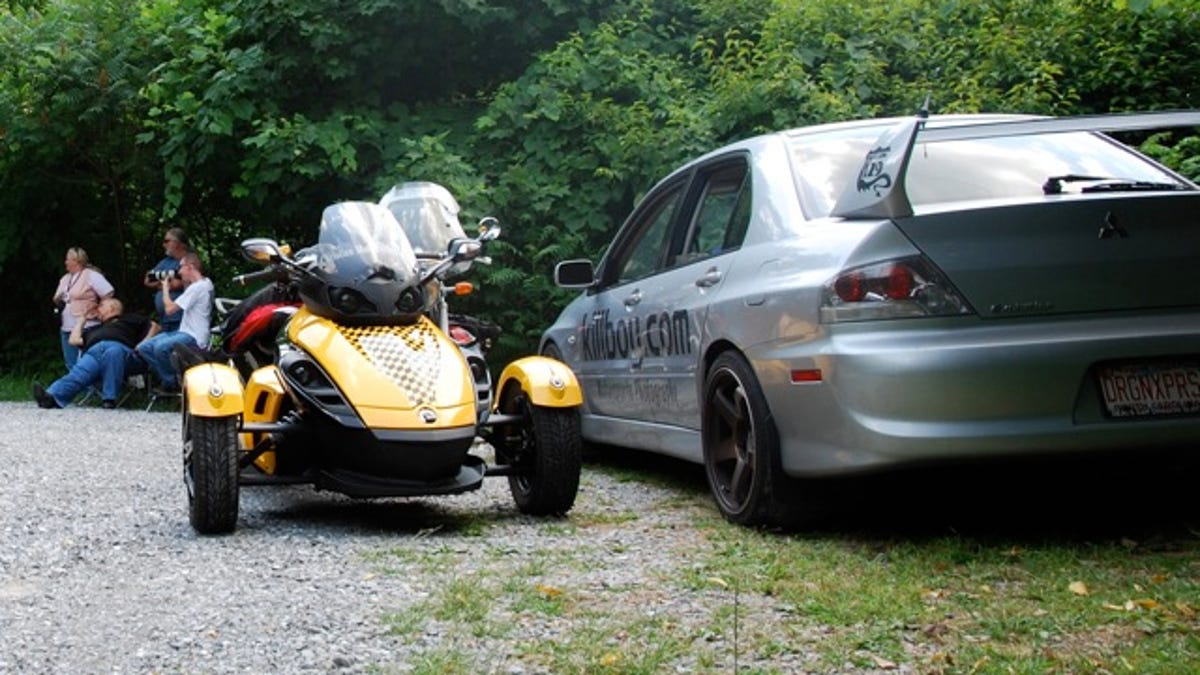Making a living taking digital snapshots of passersby
There are at least four small companies that do nothing but take digital pictures of drivers on US-129 because of the popularity of the road.

FONTANA VILLAGE, N.C.--If you've got a fancy digital SLR and have been wondering how you could make money with it, I might have just the suggestion for you.
Head on out to the border region between Tennessee and North Carolina, just on the edge of Great Smoky Mountain National Park. There, you'll find a never-ending supply of people riding their motorcycles and driving their cars along one of the most famous and beloved stretches of road in the South.
Known as "The Dragon," the road is a longtime favorite, especially among motorcyclists, and hundreds, if not thousands, of people navigate its windy curves every day.
As a result, people like Darryl Cannon of Killboy.com have proliferated. They park their cars at strategic curves in the road where they can shoot pictures of drivers coming from either direction, and then they sell the drivers--at least some of them--the pictures.
And how?
At first, as I drove along this stretch of highway as part of Road Trip 2008, I was confused as to what was going on. But after seeing two such vehicles at corners, each of which had a URL emblazoned on the side, I figured it out: the photographers were taking pictures of the riders and drivers, and then later posting them online, hoping that people will visit their sites, see pictures of themselves on the famous road, and decide to fork over a few bucks for a high-res image.
That's what Cannon, his wife, and a couple of friends are doing. Full time, he said.
I stopped at one of the curves along the way to talk with him about what he was doing and why.
He said that he routinely shoots thousands of pictures a day and sometimes, if there's a motorcycle rally in the area, can take as many as 17,000 in one shift.
This is definitely a business based on direct-mail type of response. After all, there is a steady stream of traffic, and there's a lot of competition. Yet Cannon said he's been doing this since 2003, so I guess he sells enough $6 CDs of digital images--as well as more expensive coffee mugs, prints, and other manifestations of peoples' ride along the famous road--to make it worth his while.
After he and his team finish taking their pictures--he uses a Canon 40D and has "whole pockets of" 4GB compact flash cards--they go home and laboriously sort them and post them. They organize them by date, and then by category: "Cars-Trucks," "Motards-Dirtbikes-Trikes-Scooters-Sidecars," "Touring Bikes," etc.
He said he works about 100 hours a week.
Cannon says that every day he sets up in a different place, something that's not hard, given that this stretch of road has seemingly thousands of tight curves offering the kind of two-way vantage point he needs. He's looking for good lighting and good background, so that he "might get a tight shot, but still get some of the background."
I had never seen an operation like this before, which surprises me. I heard afterward that this is something that's popular on river-rafting routes, but I'd not seen it on popular highways. And being from the San Francisco Bay Area, which is of course close to the Pacific Coast Highway, that surprised me.
But it's the extreme popularity of this stretch of US-129 with motorcyclists that makes Cannon's business possible. These are riders who travel great distances to make their way through the Dragon, and enough of them seem to like the idea of buying a picture of themselves doing so to create a business. I suspect the same is true in other parts of the country that bikers frequent.
For me, when I find myself being photographed without my consent, I usually make a gesture that I hope will render the picture worthless. It's not what you think. And I guess I'm not the only one who does things with his hands.
Cannon said that plenty of people do that, some just to say hi.
"It would be better if they wouldn't," he said, ever the photographer.

